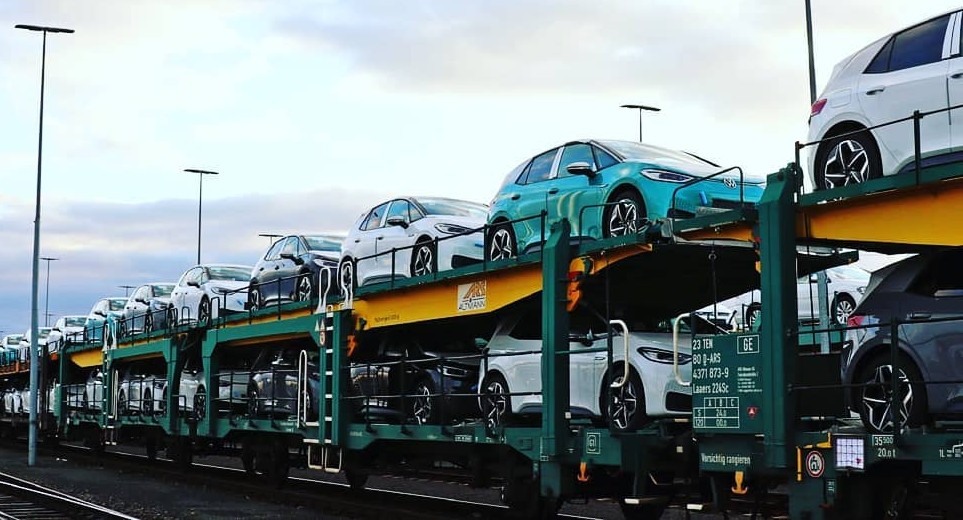During the first nine months of 2020, car sales cratered, with every major automaker seeing a steep drop in sales as the pandemic raged across the globe. That is, of course, every major automaker except Tesla. Despite the world practically stopping due to the pandemic, the Silicon Valley-based electric car maker sold more cars than ever before. Tesla even maintained its momentum from the previous year by posting five profitable quarters in a row, and it’s poised to end 2020 with an inclusion into the S&P 500 index.
A Make or Break Year, and EVs Made It
What’s quite interesting is that it was not only Tesla that saw some serious momentum this year. Even as sales of internal combustion vehicles collapsed, EVs in general managed to thrive. A good example of this could be seen in Daimler and Volkswagen’s electric car sales in 2020. Both companies saw record-setting declines in their ICE divisions, but both companies also saw their EV sales this year doubling. This, if any, further highlighted that there is a growing demand for electric cars.
Even more impressive was the fact that 2020 was a year when the electric vehicle movement could have been crushed once more. The year saw the launch of some of the most important EVs for their respective companies. In Tesla’s case, this was the Model Y, a vehicle that Elon Musk expects would outsell the Model S, Model 3, and Model X combined. Volkswagen also launched the ID.3, a car that, if successful, could very well be the second coming of the ubiquitous Beetle. Failure on the Model Y and the ID.3’s part could have resulted in the EV movement getting set back again. That did not happen.

Peak Oil
To state that 2020 was challenging would be a gross understatement. Amidst lockdowns in several countries, the world changed. Air travel all but stopped and working from home became the norm. Then in September, British oil firm BP Plc announced something remarkable: peak oil may have very well happened, and the demand for oil may never return to its prior levels. Granted, oil prices rose in November as vaccine trials continued and demand recovered somewhat in Asia. But even as the world approached a return to some form normalcy, it was evident that things would no longer be the same.
US Federal Reserve Chairman Jerome Powell echoed this sentiment last month. “We’re not going back to the same economy. We’re recovering, but to a different economy,” he said. Powell has a valid point. In the post-pandemic world, more people will likely continue to work from home. A good number of people will likely travel less as well. BP’s estimates noted that about 2/3 of the pandemic’s impact on oil demand will be from adverse effects on the global economy, and 1/3 will be due to permanent changes in human behavior. This behavior, it seems, includes a shift to electric cars.
A Point of No Return for the Internal Combustion Engine
The transportation sector accounts for a large part of the world’s oil consumption. Bloomberg notes that over half of the world’s crude is used by the transportation sector, and 3/4 of that amount is taken up by wheels on the road. With car buyers going for sustainable vehicles during a pandemic, and with sales of ICE cars dropping steeply, it is starting to seem like the transportation sector’s demand for oil is only bound to get less in the coming years. With this drop in demand comes the end of the internal combustion engine.

Signs of the ICE extinction actually started becoming notable before the pandemic hit. As early as 2018, EVs started bucking the trend in auto sales, resulting in some analysts speculating if sales of gas and diesel-powered vehicles will no longer return to levels seen in years prior. The idea of “peak oil” happening seemed farfetched then, but amidst the pandemic and the collapse of ICE sales, the end of the oil age is looking very plausible.
Batteries and a Path to ICE Extinction
The electric car age will be powered by batteries. It is then fortunate that batteries are a technology, not a consumable fuel. This means that as battery production reaches higher levels, battery prices are bound to get lower. Data tracked by BloombergNEF revealed that every time battery supplies doubled worldwide, the cost of batteries declined by about 18%. And considering that companies like Tesla are actively pursuing plans to produce batteries at unprecedented volumes, there is a good chance that battery prices will decline to such a degree that electric cars may reach price parity with gas and diesel-powered cars sooner than expected.
Price parity will likely be the final nail in the ICE coffin. Cost, after all, is the one area where the internal combustion engine still has an edge against EVs. Once this edge is taken away, and once rapid chargers become as ubiquitous as gas stations, there will quite literally be no more reason left to own a vehicle equipped with an internal combustion engine.

Bagikan Berita Ini















0 Response to "Tesla and EVs didn’t brake for the pandemic, and now the age of oil is ending - Teslarati"
Post a Comment